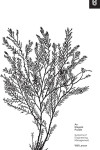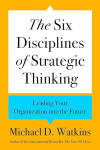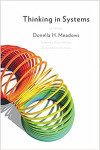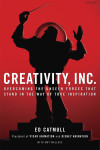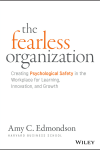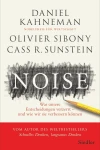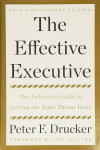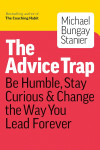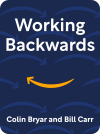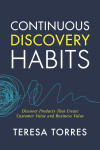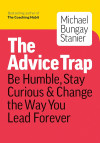Noise
A Flaw in Human Judgment
"Noise" introduces a critical but often overlooked aspect of human judgment - the random variability that affects decision-making across all domains. While much attention has been paid to bias in decision-making, the authors demonstrate that noise (unwanted variability in judgments) can be equally or more harmful to organizational effectiveness. Following Kahneman's influential "Thinking, Fast and Slow," this work has garnered considerable attention, though some readers find its treatment less comprehensive than parallel works like "Superforecasting."
The book combines rigorous research with practical applications, showing how noise manifests in various professional settings - from medicine to law, from financial services to criminal justice. Through detailed analysis and real-world examples, it demonstrates how seemingly identical situations often lead to dramatically different judgments and decisions. This overlap with other works in the field is not coincidental - the authors share intellectual foundations and frequently reference each other's research, creating a rich theoretical framework for understanding decision-making processes.
The authors present a systematic approach to identifying and reducing noise through decision hygiene practices, offering concrete tools for organizations to improve their decision-making processes. They emphasize that while complete elimination of noise is impossible, significant improvements in judgment quality are achievable through structured approaches and organizational changes. For readers new to decision science, "Noise" provides an accessible entry point to these concepts, while those already familiar with works like "Superforecasting" may find its value in its focused examination of judgment variability and practical organizational solutions. The book's impact often depends on the reader's prior exposure to these ideas, making it particularly valuable as an introduction to decision-making theory and practice.
By reading "Noise", you will:
- Master the distinction between bias and noise: Understand how random variability differs from systematic error and why both matter for decision quality
- Learn to conduct noise audits: Develop skills to measure and identify sources of unwanted variability in your organization's decision-making processes
- Implement decision hygiene practices: Apply practical techniques to reduce noise while maintaining judgment quality
- Design better decision-making systems: Create structures and processes that promote consistency and reliability in professional judgments
Books to Follow
"Thinking, Fast and Slow" by Daniel Kahneman: Provides the foundational understanding of cognitive biases and decision-making processes that "Noise" builds upon. While "Noise" focuses on variability in judgment, this book explains the underlying mental systems that create both bias and noise. It helps readers understand why our minds are susceptible to these judgment flaws and provides a framework for recognizing when we might be vulnerable to them.
"Superforecasting" by Philip E. Tetlock and Dan Gardner: Explores techniques for improving predictive judgment, directly complementing "Noise's" focus on decision quality. Where "Noise" identifies the problems of variable judgment, "Superforecasting" shows how some individuals consistently make better predictions by using structured approaches and actively updating their beliefs. The book provides practical techniques for reducing both bias and noise in forecasting.
"The Checklist Manifesto" by Atul Gawande: Offers practical approaches to reducing variability in complex decisions through systematic processes. While "Noise" diagnoses the problem of unwanted variation in judgment, "The Checklist Manifesto" provides a concrete tool for implementing decision hygiene. It shows how simple checklists can help maintain consistency and quality in complex professional judgments.
"Work Rules!" by Laszlo Bock: Examines how to apply data-driven decision making to people management. While "Noise" provides the theoretical framework for understanding judgment variability, "Work Rules!" shows how these principles can be applied specifically to HR decisions, from hiring to performance management. It offers practical strategies for reducing noise in people-related judgments through structured processes and analytics.
"Predictably Irrational" by Dan Ariely: Examines systematic patterns in human decision-making, providing additional context for understanding why noise occurs. Where "Noise" focuses on unwanted variability, this book reveals how our irrational behaviors follow predictable patterns. Understanding these patterns helps in designing decision processes that can counteract both systematic bias and random noise.
Understanding Noise vs. Bias
Noise represents random variability in judgments, while bias represents systematic error. Organizations often focus on addressing bias while ignoring noise, yet both can be equally damaging. For example, in insurance underwriting, different adjusters might assess the same claim differently (noise) regardless of whether they systematically over- or under-value claims (bias).
Decision Hygiene
Like medical hygiene prevents infection without targeting specific pathogens, decision hygiene reduces noise through systematic practices. This includes breaking decisions into independent components, using structured frameworks, and aggregating multiple independent judgments. For instance, separating hiring decisions into distinct skill assessments rather than relying on overall impressions.
The Power of Multiple Independent Judgments
Averaging multiple independent judgments often produces better results than individual expert decisions. This “wisdom of crowds” effect works best when judgments are truly independent and focused on the same specific question. This principle can be applied within organizations through structured review processes.
Rules vs. Standards
More specific rules generally produce less noise than general standards, though both have their place. Organizations need to balance the clarity and consistency of rules against the flexibility and context-sensitivity of standards. For example, specific scoring criteria for job candidates versus general “cultural fit” assessments.
Noise Audit
A systematic process for measuring unwanted variability in judgment within organizations. Audits reveal the extent of noise and help identify where decision hygiene practices would be most valuable. The process involves having multiple judges evaluate identical cases independently.
Q: How can we distinguish between beneficial variability (diversity of thought) and harmful noise?
A: Beneficial variability occurs when different perspectives lead to innovation or better solutions. Noise refers to unwanted variability when judging the same situation against the same criteria. The key is whether variability serves a purpose or merely reflects inconsistency.
Q: Isn’t some level of noise inevitable in human judgment?
A: Yes, complete elimination of noise is impossible and undesirable. The goal is to reduce noise to acceptable levels through structured processes while maintaining the benefits of human judgment. The book provides frameworks for determining appropriate noise levels for different contexts.
Q: How does reducing noise affect decision speed and efficiency?
A: While decision hygiene practices may initially slow down processes, they often lead to better and more consistent decisions that require less rework or correction. The investment in structured processes typically pays off through improved quality and reduced variability.
Q: What’s the relationship between noise reduction and automation?
A: While algorithms can reduce noise, they’re not always the answer. The book advocates for a balanced approach that combines structured human judgment with appropriate use of algorithms, recognizing that each has its place in decision-making.
Q: How can organizations maintain flexibility while reducing noise?
A: Decision hygiene doesn’t mean rigid standardization. Instead, it provides frameworks for making better judgments while allowing for necessary adaptation to context. The key is distinguishing between beneficial flexibility and harmful inconsistency.
Q: How do you get buy-in for noise reduction initiatives?
A: Success requires demonstrating the cost of noise through audits, involving stakeholders in designing solutions, and showing how decision hygiene practices support rather than replace professional judgment. The book emphasizes the importance of making noise visible to drive change.
- When designing evaluation systems: You need to create or improve processes for performance reviews, hiring decisions, or other assessment systems
- During organizational scaling: Your company is growing and needs to maintain consistency in decision-making across multiple teams or locations
- When facing quality control challenges: Your organization shows unexplained variability in outcomes despite seemingly standardized processes
- Before implementing major decision-making frameworks: You want to ensure new processes reduce rather than amplify judgment noise
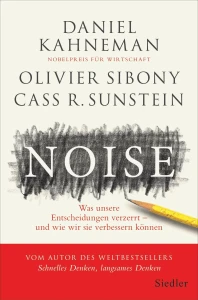
Your support helps me maintain and improve the book recommendations for everyone.
